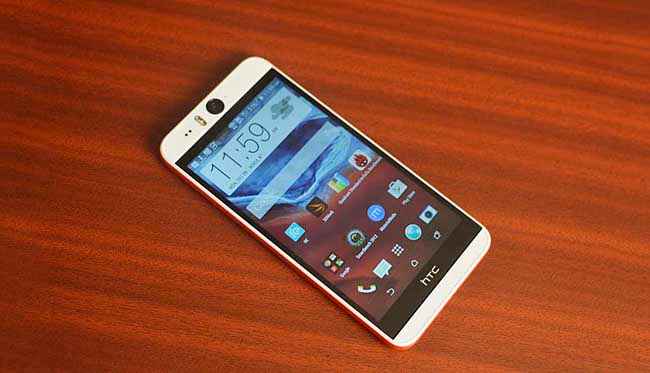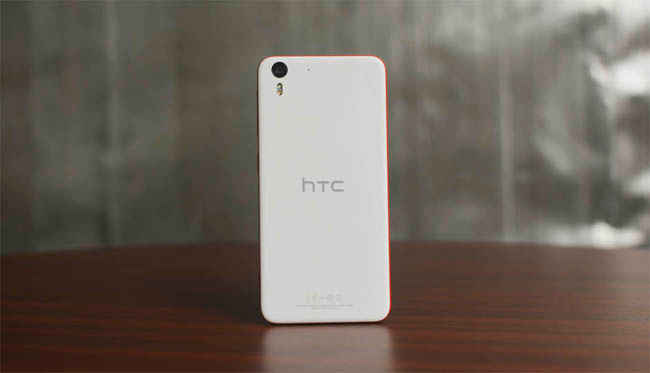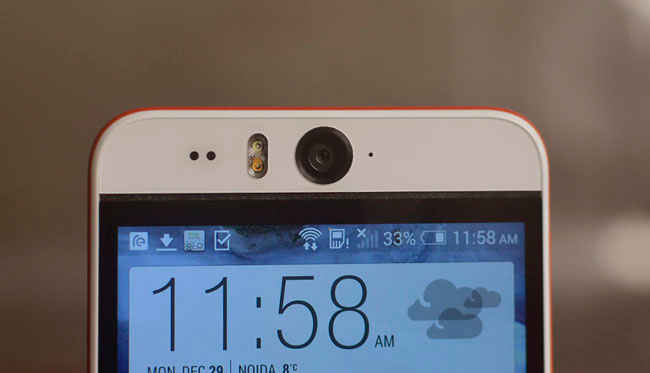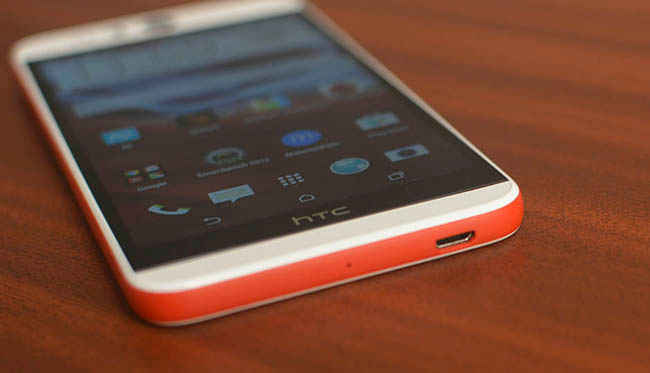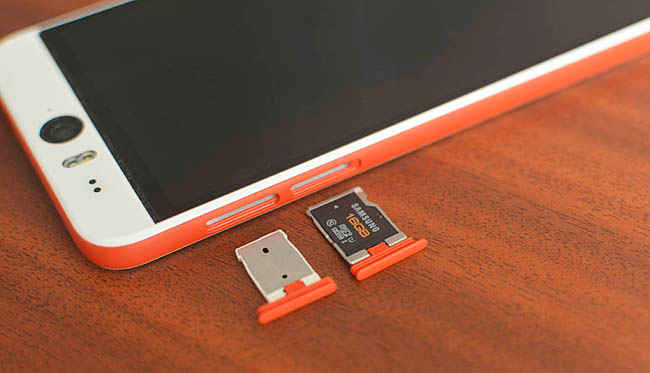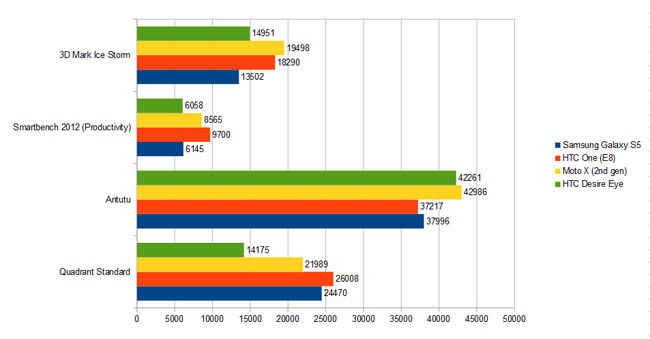HTC Desire Eye Review : More than what meets the eye
The Desire Eye is again a superb looking smartphone from HTC which is as powerful as their flagship device, the One (M8). It is also a selfie centric handset offering a front 13MP camera with a dual-tone LED flash and even a rear 13MP camera which both can take great pictures. It is defintely highly priced, making it sit with HTC's other flagship devices, which is slightly confusing, but gives the consumer an option for a slightly larger device.
SPECIFICATIONS
Display: 5.2 inches, 1920×1080 resolution with Gorilla Glass 3 (424 ppi)
Battery: 2400mAh
Storage: 16GB
Camera: 13MP rear and front with dual-tone flash
SoC: Qualcomm Snapdragon 801
CPU: Quad-core 2.5 GHz
GPU: Adreno 330
RAM: 2GB
Operating system: Android 4.4.4 with Sense 6
Connectivity: 3G, Wi-Fi, Bluetooth, NFC
BODY AND DESIGN
We know for a fact that the Desire series does not come under HTC's premium line of devices, but the Desire Eye is definitely a premium device and is probably the most expensive from the series. It is all plastic and gives a Desire 820 looks and feel, but if you look closer, you shall see the difference.
The Desire Eye has a very soft matte plastic back and a distinguished coloured accents all around the edges, in our case we get a red-band. The front houses the 5.2-inch display, the HTC logo beneath it, and a large camera lens, along with the LED flash, sensors and the earpiece right above it. You definitey can't miss the front camera as it sits right in the middle, kinda like cyclops staring right at you. You also get HTC's BoomSound stereo speakers which are nicely hidden in very thin slits on either sides of the display. Now these slits are deep enough to gather dust and sweat, so it does need a bit of cleaning now and then.
All the ports and card slots are placed on the coloured accent and they finish is quite good. The SIM tray and the microSD card tray are worth mentioning as HTC has put a brand new mechanism to pop them out. You wont be needing an ejecting tool, instead you can just pull the trays out with your nail.
The device isnt very thick and weighs perfectly well for a device with a 5.2-inch display. Speaking if which, the panel is quite good offering a smooth and flawless experience like the HTC One (M8) and the One (E8). The display offers a good amount of brightness and contrast and the colours feel quite accurate. This is also IPX7 certified which means it is water and dust proof so now you dont need worry about those water splashes.
In terms of design, the Desire Eye is spot on and we loved using it. But, since we don't entirely love large devices, we just hoped that HTC would have made it slightly smaller.
PERFORMANCE
The Desire Eye runs on the same hardware as the HTC One (M8); thus the performance capability of the handset is quite good. As we have seen on the last two high-end smartphones, the user experience is buttery smooth with Sense 6.0 providing a great Android experience. We didnt face any glitches, app crashes or anything out of the usual. You get all the Sense goodies including BlinkFeed and Zoe.
As usual we ran benchmark tests on the Desire Eye and compared it to some competitors in the same segment.
For the ones who love gaming on your smartphone then the Desire Eye is a pretty good option. The 5.2-inch display is large enough to enjoy your games and the Adreno 330 GPU provides a lot of power to run high-end games like Marvel-Contest of Champions, Asphalt 8 or even Real Racing 3.There were no signs of frame drop or crashes.
CAMERA
The quality of the both the cameras is quite good and seems similar to the camera unit we had seen on the HTC One (E8). The dual-tone LED flash is also quite a good addition and sensors recognise the required tone and fire the right flash (cool or warm), well almost. The camera is super fast, clicking with absolutely zero shutter lag. Like most high end HTC phones, the Desire Eye comes with the same camera software offering a variety of filters, a decent HDR mode, some basic editing features, and AE and AF lock features. Sadly there is no re-focusing, seasons filters, or the cut and paste features, but we presuming that HTC would be adding it later via an app update.
Now both of the cameras are identical and produce quite similar results, although the front camera has an aperture of F/2.2 and offers a wider field of view while the rear has an aperture of F/2 but a slightly narrower field of view. In broad daylight you get good pictures with accurate colours and white balance. Even the HDR mode produces evenly lit pictures without overpowering the highlights or the shadows. In low light, the noise reduction makes the pictures loose a lot details and they lack saturation as well. When you are using the front camera, you can get some pretty good selfies and thanks to the wide angle lens, you can cover more area as well. There are some modes as well which you can tinker around, including a picture in picture mode, a 360-panorama mode and more.
The cameras can record 1080p videos at 60fps and 720p videos at 120fps. Videos come out sharp and snappy and even the audio quality was crisp. The only issue that we noticed was the colour tones which could've been better.
CONCLUSION
The Desire Eye offers a similar performance level as you would find on the One (M8) or the One (E8) in a slightly larger package which feels premium. The dual 13MP cameras are not bad at all and the overall UI experience is a delight. The only, problem is the price. At Rs. 35,990 it falls in the same price bracket as HTC's premium flagship smartphones. It seems that HTC's strategy is to provide different smartphones in the high-end flagship section, leaving the consumers to make the choice.
You can also choose the HTC One (E8) or the Moto X 2nd gen.

